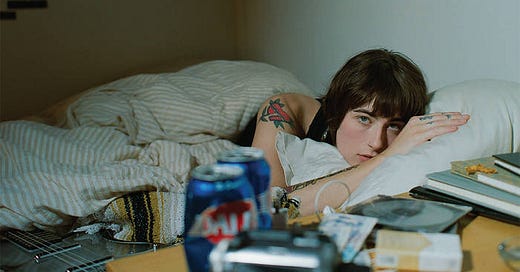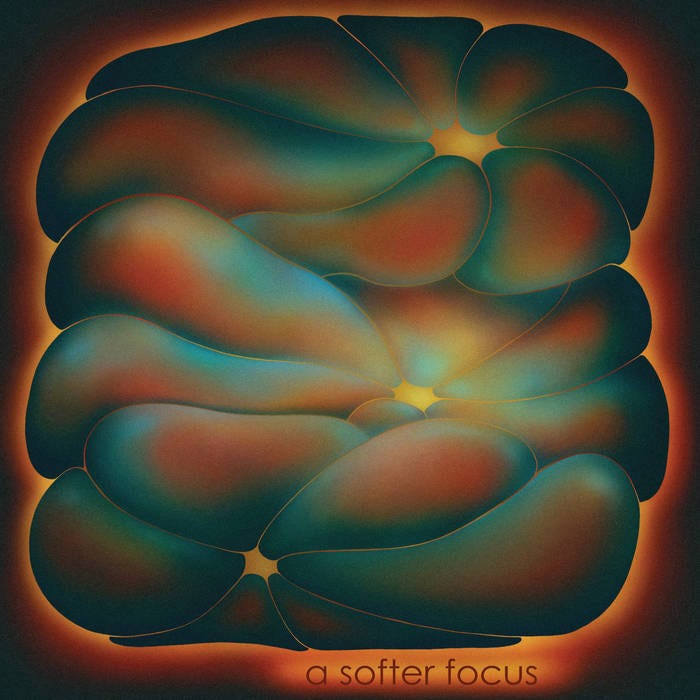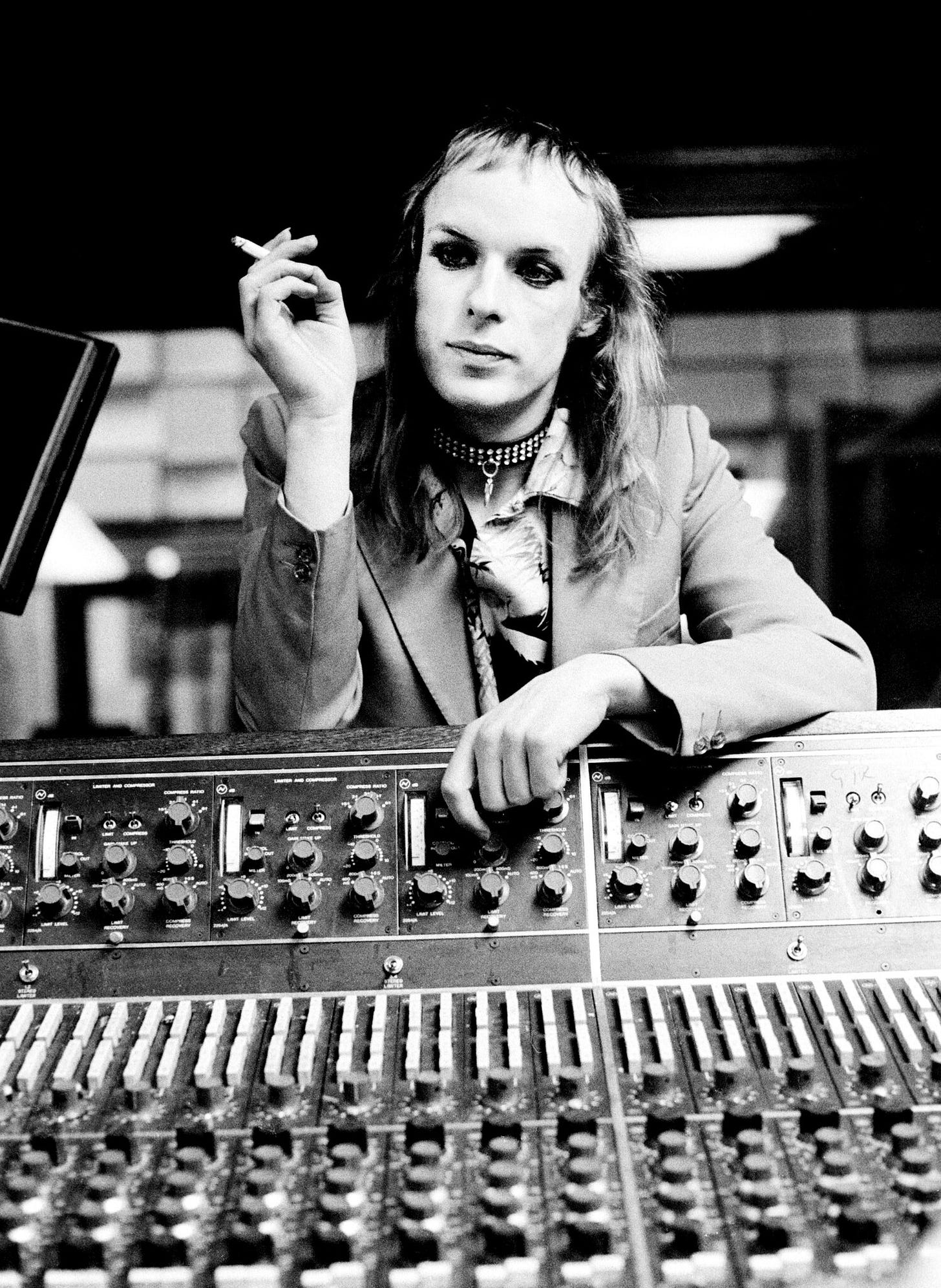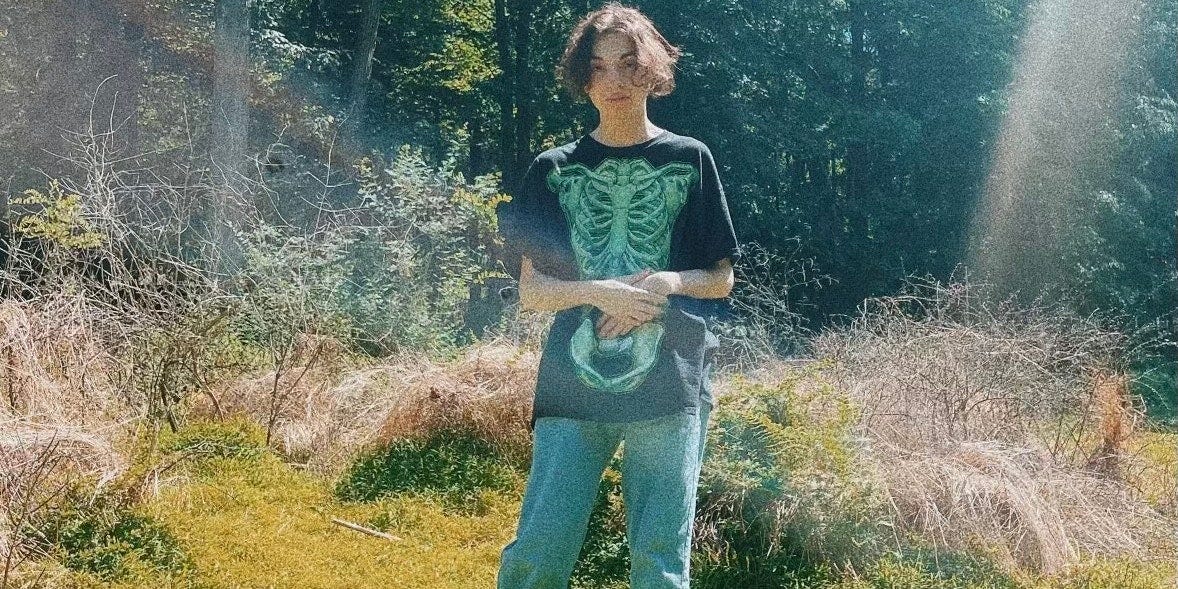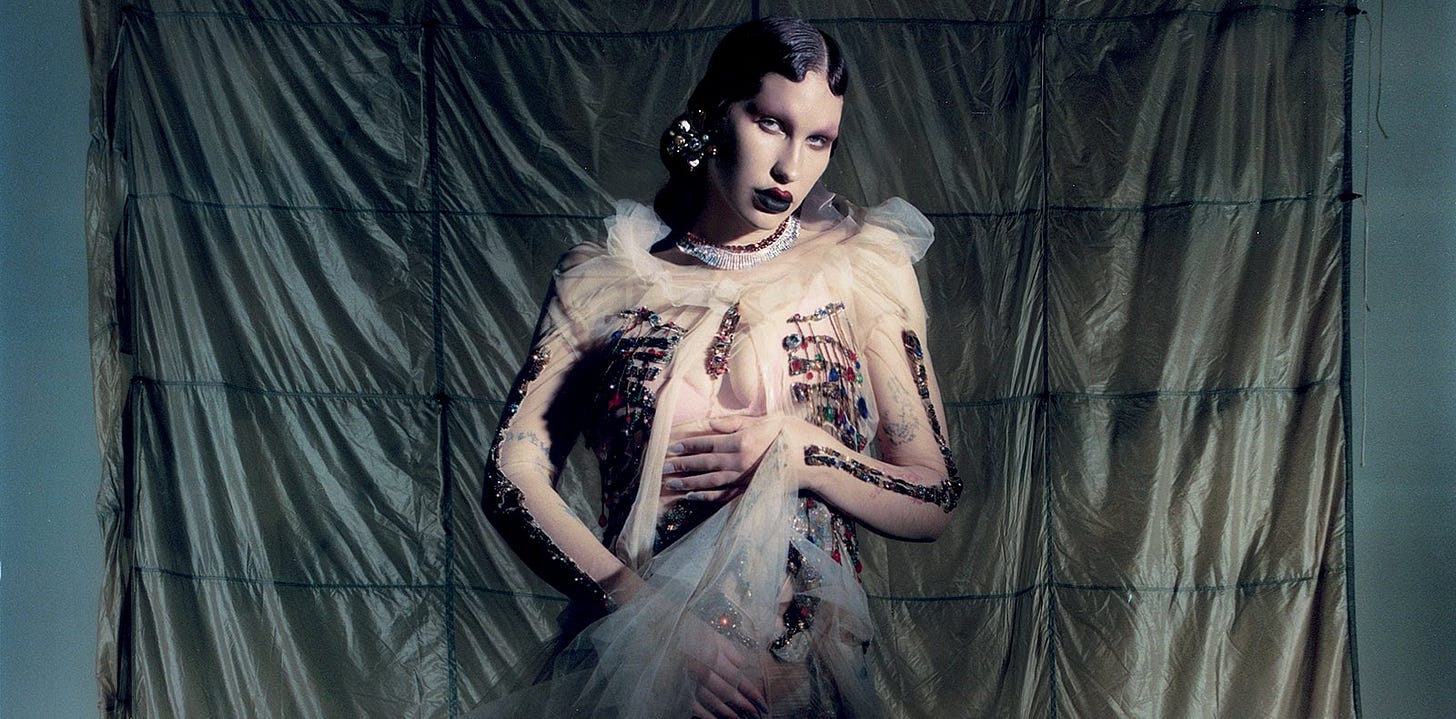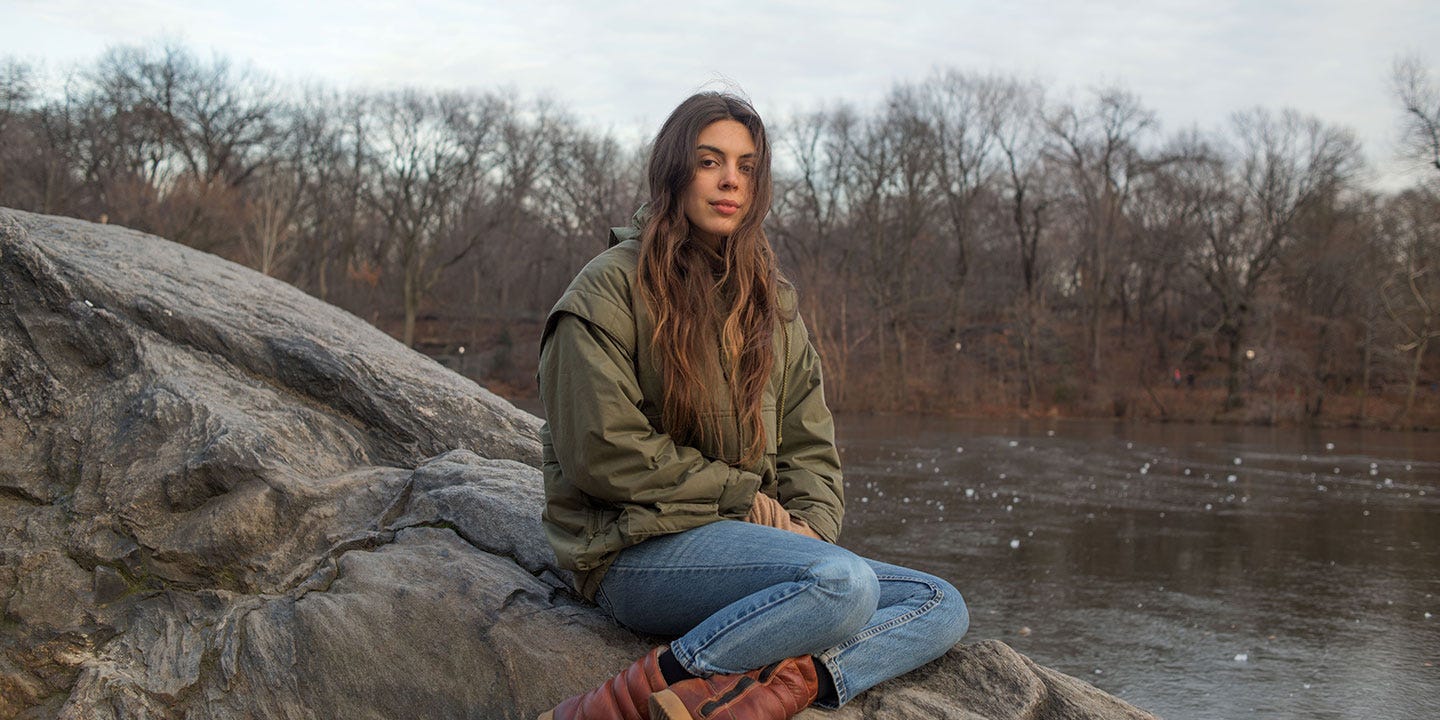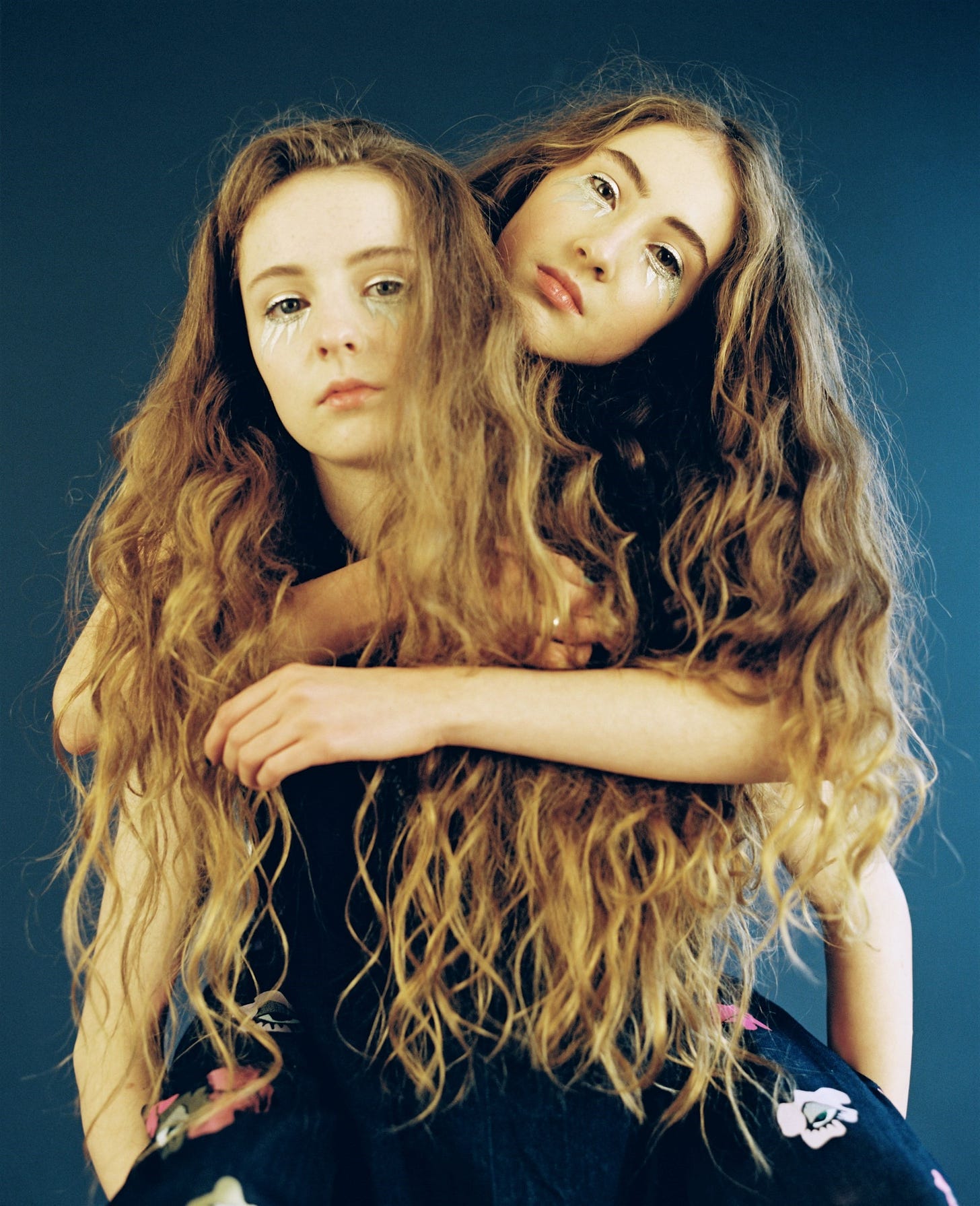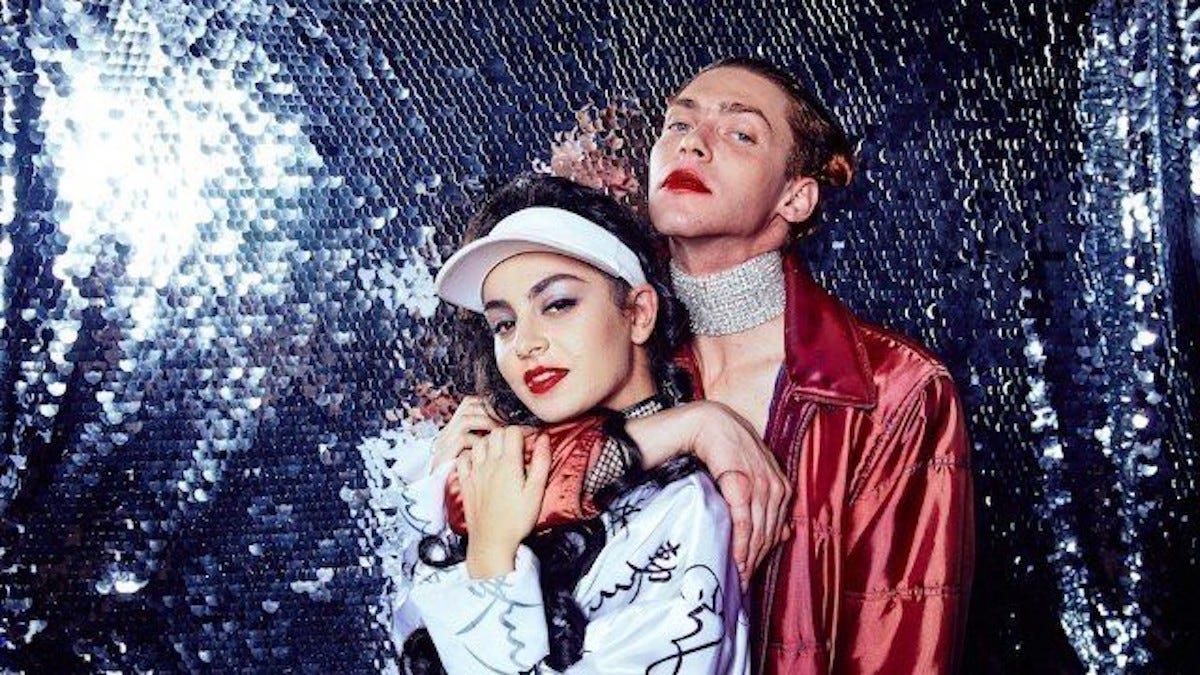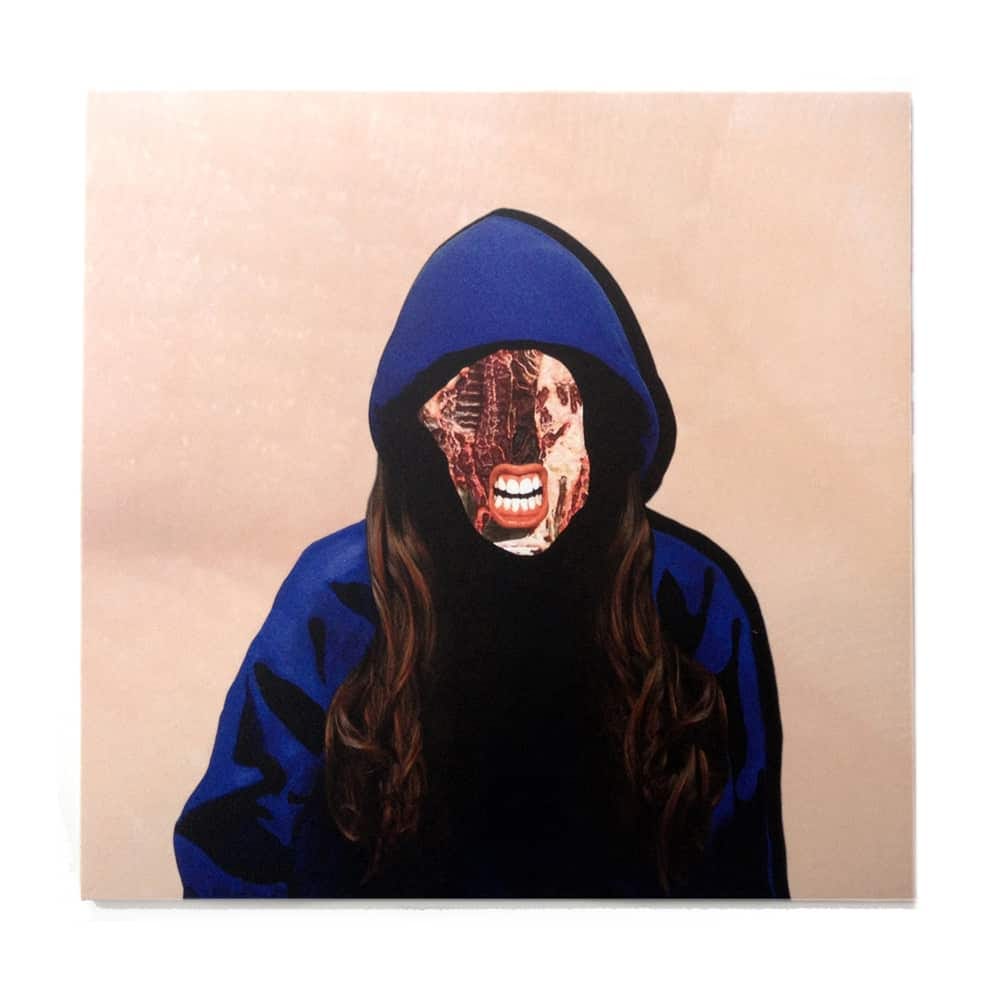A round-up of music by trans (and trans adjacent) artists bringing the calm amidst the media blizzard
Not so much a record of our times or an antidote to the times but a place to pause and reflect on the importance of ambience, intricately created aural environments, and allyship
Right now, in July 2024, for reasons that are far too obvious, I’m trying to cut down on the doomscrolling that verges on digital self-harm and, I suppose, start listening more attentively ‘…through the earthquake, wind and fire…’ for that ‘…still, small voice of calm.’ In this period of collective and individual healing and renewed emphasis on self-care, music by trans people has never been so important to me, never so much a part of my sonic environment, day by day, alongside ever more literature, TV, and cinema that’s trans positive, and vastly different from what was available a quarter century ago, when I moved to London and started gender exploring. [[i]]
As I write this, I’m listening to my newest discovery, claire rousay (no caps) whose ambient album A Softer Focus (2022) evokes dawn across the fields in one of the flyover States with its long violin and cello drones, and to be completely subjective may come to stand for the emergence of a new trans friendship, as well as soundtracking a perfect day, taking the train into London, and then the long bus-ride through the City itself to the Transmissions film night in Dalston Superstore, out and proud and visibly trans but the opposite of loud: just watching the scenery through the windows unspool, and being one with it all. This isn’t entirely irrelevant, though, and I raise it to illustrate that it this is meditative music; there’s a lot of space in the mix into which to project your own thoughts and associations, to merge with the natural or urban environment via the music-as-portal.
Sentiment (2024) is both more song-based and interspersed with longer passages of recorded conversation but still tends toward the key qualities of ambient music defined by (that most trans adjacent of all cis het guys) Brian Eno. ‘Ambient music must be able to accommodate many levels of listening attention without enforcing one in particular; it must be as ignorable as it is interesting,’ quoth Eno and I say Amen to that, 50 years on. The opening track needs a trigger warning – it’s a monologue from someone’s long dark night of the soul, and might set some eyes rolling but also maps closely onto the experience of trans siblings I’ve known and lost, others who worry they won’t last much longer, and those we’ve collectively lost and feel we know from media coverage, or speeches at vigils. Rather than setting the tone for the album, it almost functions like a challenge from claire to herself: create something peaceful and only occasionally elegiac to counter the pain at the outset. The result is woozy, lovely, and loveable: a sonic watercolour that’s far removed from the bold futurism of SOPHIE in terms of instrumentation and the lack of sharp edges to the sound but very much that of a sibling in that the conspicuous artificiality of the vocals (pointing toward our active self-making) co-exists alongside acoustic instruments and field recordings as signifiers of timelessness.
Overall, claire sounds like a stoned version of Jane Remover, inasmuch as the collage of found-sounds is integral to both and they use AutoTune in a way that reduces the masculinity of their voices without actually erasing their transness; if anything, foregrounding it. I wonder how conscious the strategy is, thinking of trans poetess Callie Jennings’ explanation of her disruptive punctuation, line-breaks, and lower-case letters; a signal that This Is Not to Be Read As Prose. There’s simultaneously a resistance to legibility, a demand to be listened to closely, and an opportunity to listen to the voice as instrument, as texture, without being distracted by the literal meaning of the words.
Last Autumn, I was at a Trans Fem Social where the talk about music we like seemed to reveal a pattern of enjoying artists for whom Sound Design is as important as melody and rhythm, if not more so. (This is anecdotal evidence, by the way, not a generalization; I’m only talking about one sub-genre of trans people ; ) At the time I speculated that we’re perpetual observers – hypervigilant, perhaps, due to long experience of monitoring external threats and our own tells (while closeted), as well as seeking out other siblings revealing themselves through micro-expressions. A gift that comes from this, I want to believe, is a savouring of the sounds behind the speech, the significance of pauses, hesitations, omissions, lacunae. At the time, we agreed on Eartheater as a favourite in our loose category of trans adjacent artists, and I find myself wondering at the significance of her transition from a very conventionally femme-presenting woman, making technically brilliant folk on acoustic guitar, to her current Marilyn Manson-like stage persona whose sound wrong-foots you at every turn. In what respect might the two processes or trajectories be somehow articulated to one another? Less disruptive but still more interested in ambience than tunefulness is Maria BC, a non-binary musician making deliriously psychedelic folk music, not far off Grouper, but less lo-fi; check out Spike Field (2023) and Hyaline (2022). Interviewed by ToneGlow, [[v]] she commented on a song with the haunting line ‘Is my body right?’:
“Haruspex” […]is so much about the frustration of being embodied and the frustration of living in a culture where we have to work to survive, and how these things are at odds with each other. I think my resources were such, with this one, that I was able to get a bigger sound. There was this really special moment when […] I was playing into my brother’s bass amp with my guitar, and the whole time I was recording I was getting radio feedback through it intermittently. I struck this one bass note on my guitar and the sound of the radio interference just rushed in. When I put it into the arrangement, it just felt so perfect.
It’s that attentiveness to happy accidents that’s always characterized many of my favourite artists, and their willingness to accommodate the chaos and unpredictability of existence rather than polish the music obsessively (expressing a desire for control and conformity to the formulae of popular music), right back to the moment I first heard “Creep” in 1993, with the abrasive crackle of the loose guitar jack being thwacked grabbing me and endearing me to the ascendant Radiohead far more than the relatable but, frankly, ten-a-penny sentiments of the lyrics.
It might seem essentialist to focus on a handful of musicians who happen to be trans or non-binary and gravitate toward particular sounds while ignoring those who don’t fit the thesis but personalities that resist the binary and actively, consciously seek an authentic identity, seem to go hand in hand with a musical sensibility that deprioritizes the hook, the chorus, the riff in favour of more nebulous or intangible qualities that demand interpretation rather than an immediate reaction. (Even Julie Byrne, who sounds more conventional than most of the artists mentioned here, is further along the continuum toward ambient soundscape than song, when compared to the cis musicians who crop up in the RIYL lists.) The chorus in particular is a striking omission: yes, there are occasional refrains but the songs often take on the style of one-on-one conversations; there’s no expectation of becoming anthems and perhaps even an avoidance of that foremost signifier of a large, sustaining community, which may be the foremost cis privilege. We - trans people - seem to like creating music that allows us to dissolve into Nature but, less often, The Crowd.
One of the songs I most love by any trans artist is, predictably, “It’s Okay to Cry” by SOPHIE, and would love with or without the incredibly bold statement that is the video in which the camera slowly drops from a medium shot taking in her ultra-feminine lips and cheekbones as well as her broad shoulders to reveal the small but undeniable breasts of second puberty. What’s striking about the arrangement is that it builds to a potentially colossal, stadium-uniting refrain…but snatches it away after a few seconds. The lyrics are ambiguous enough to invite cis listeners or, frankly, anyone who’s ever tried to support a friend who’s resistant to asking for help, but for me it’s the structure of the song that’s so trans: the long delayed hook that somehow enacts the hard-won victory that is gender euphoria after years of struggle. And, yes, it gives us permission to cry, which God/dess knows may be one of the greatest gifts of transition for this or any transfem after a lifetime of repression.
Over the past 18 months, some of the pop artists who’ve meant most to me are the ones who most benefited from her influence of mentorship, despite dying all the way back in January 2021. Let’s Eat Grandma may not feel very trans adjacent but it’s telling that of all the synth-pop I’ve become so much more receptive to since starting HRT (no longer averse to the sound of other-people’s-fun because my basic experience of being is no longer permanent dissatisfaction) the artists I most like are ones who celebrate close female friendship. For me, transition is so much more than development of a form of individual embodiment that feels more right or good but also development of a new pattern of relationships with trans siblings involving more expression of physical intimacy, free exchange of compliments, and emotional candour. LEG’s third album, Two Ribbons (2022), has SOPHIE’s sonic fingerprints all over it, and it meant a lot to read about cis women grieving a trans woman, openly, at a time when transphobic attacks in the broadsheets and from the government itself was soaring.
When I get to the end of 2024, I suspect one of my moments of the year will be the day I caught up with an NB friend, after many months apart, in Dalston Superstore; we talked so long we missed the film, and the clubnight started up, if by “club” you mean the DJ dropping the entire Charli XCX album, brat, interspersed with tracks by SOPHIE, Lorde, and Caroline Polachek. Seeing the younger transfems & transmascs leaping up and down in front of the DJ booth was an absolute joy, even without joining in. The only track missing was “so i” – the elegy for Charli’s one-time mentor and collaborator, which adapts the chorus of “It’s Okay to Cry.” Again, like LEG, it’s the expression of solidarity, kinship, sisterhood, what have you, across the (imaginary) cis / trans gender divide that breaks my heart… then puts it back together again, just like the moment in January when an old (cis het male) friend of 25 years standing dropped “I Can Make You Feel Better” into his DJ set, the first time he’d seen me since transition. At the end of this year, when brat is, inevitably, high on album of the year lists, I wonder how many younger listeners will discover the late-lamented SOPHIE through Charli as a conduit, the same way Bjork introduced the world to Arca.
Next week, I’ll be looking at some more trans adjacent musicians – Gazelle Twin, The Knife, and Fever Ray – whose adjacency constitutes an interrogation of femininity, motherhood, queer identity, and body horror. We have yet to see trans motherhood represented much at all in any artform – despite the hope that Ezra Furman will make it more of a theme in her work after the exquisite All of Us Flames (2022), and the example of Torrey Peters’ landmark novel, Detransition, Baby (2021), which more or less ends where motherhood begins – but I’ve found myself drawn to all of the above over the past decade because their evocation of unruly bodies in pregnancy, or when re-learning ones own sexuality after coming out as queer, maps onto the experience of dysphoria and second puberty.
Apologies if this hasn’t been as analytical (let alone musicological) a piece as you might have hoped. We’re still at the outset of anything like a discourse on trans poetics but perhaps the exploratory nature of this piece, and the emphasis on the ecosystem of trans musicians and their allies, so similar to the ecosystem of trans people supporting one another, is something worth prioritizing, for now. There’s a science to writing hooks that make people like songs but when it comes to making music you love, there needs to be a lot more space for personal narratives, impressions, and free associations to enter. That’s part of what makes it an art.
[i] At the time of writing, it’s been just over a week since TERF Island rejected the most incompetent, corrupt, virulently transphobic government imaginable and…I have nothing more I want to say about that right now, nor how little hope I feel that the new government will throw the lever and switch the process into reverse any time soon, just slow down the attacks.
Countering all the above, what I’ve seen in the past two weeks in my personal life has been some extraordinary allyship from cis people in their 50s, 60s, and 70s; two different groups of trans siblings rallying round to support those in crisis; the fortitude of survivors of some of the worst abuses imaginable; the unconditional love of my own young children, and the startling wisdom of what they say, sometimes, that would put adults to shame. I’ll find a different for(u)m to write about some or all of this, giving the people involved the respect they deserve.

